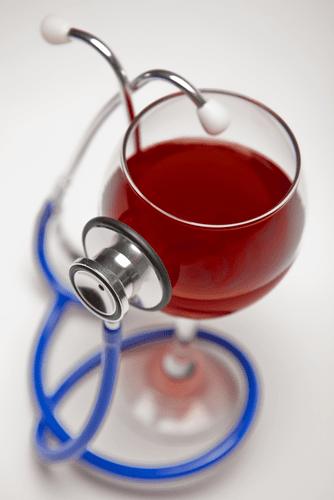Blood pressure, breathing rate, pupil size, and responsiveness are all considered in the assessment. A mixed drink or cocktail could have more than one serving of alcohol in it. If you’re not sure, it is best to call 911 and describe the symptoms you observe—the dispatcher can advise you on your next best course of action. If someone near you has these symptoms, call 911 (or your local emergency services number) or take them to the nearest emergency room.
Management and Treatment
Note that a BAC of 0.08 percent is the legal limit of intoxication in the United States. A person can be arrested for driving with a BAC above this limit. Vasodilation also interferes with the body’s ability to compensate for bleeding and shock. This is particularly important to consider as alcohol weakens the walls of blood vessels and makes them more susceptible to rupture and bleeding. Alcohol poisoning can make a person black out, causing loss of consciousness and often an inability to remember many of the events that occurred. Take the assessment and get matched with a professional, licensed therapist.
- You don’t have to be homeless and drinking out of a brown paper bag to be an alcoholic.
- Sometimes alcoholism develops suddenly in response to a stressful change, such as a breakup, retirement, or another loss.
- When you drink heavily, your body gets used to the alcohol and experiences withdrawal symptoms if it’s taken away.
- The affects can range from dementia and intellectual functioning to debilitating conditions that require long-term care, even if a person has been sober for a period of time.
- Frequent episodes of problematic drinking and high BAC levels could increase the likelihood of alcohol addiction developing.
- In fact, doing these things can put an intoxicated person at greater risk of injury and death.
How to Avoid Alcohol Poisoning

Please donate today to help us save, support, and change lives. Those problems could include depression, an inability to manage stress, an unresolved trauma from your childhood, or any number of mental health issues. Such problems may become more prominent when you’re no longer using alcohol to cover them up.
Binge Drinking and Alcohol Toxicity
In order to stay alcohol-free for the long term, you’ll also have to face the underlying problems that led to your alcoholism or alcohol abuse in the first place. Binge drinking can have many of the same long-term effects on your health, relationships, and finances as other types of problem drinking. Binge drinking can lead to reckless behavior such as violence, having unprotected sex, and driving under the influence. Binge drinking can also lead to alcohol poisoning, a serious and sometimes deadly condition.
- If you’re ready to seek treatment for alcoholism or would like to know more about your treatment options, American Addiction Centers (AAC) can help.
- In severe cases where kidneys fail, dialysis may be started to support blood filtration.
- This is also found in mouthwashes, some medicines, and household products.
- Continuing to drink despite clear signs of significant impairments can result in an alcohol overdose.
- Men ages are the most common demographic in alcohol poisoning-related fatalities.
- This keeps any leftover alcohol from getting into your bloodstream.
- If you are with someone who has consumed too much alcohol and is at risk for alcohol poisoning, call 911 immediately.
- These other conditions can complicate the symptoms, making it more challenging to recognize alcohol poisoning.
- If a person chooses to drink, it is best to enjoy the drink slowly and avoid drinking on an empty stomach.
- Note that a BAC of 0.08 percent is the legal limit of intoxication in the United States.
- As you consume alcohol, it enters the bloodstream, which causes your blood alcohol content (BAC) to rise.
Alcoholic drinks contain a form of alcohol known as ethyl alcohol or ethanol. This is also found in mouthwashes, some https://www.cdnapolicity.it/tax-free-settlement-agreement-hmrc/ medicines, and household products. Poisoning happens when you drink too much ethyl alcohol in a short space of time.

Download or order the free 20-page booklet, “Rethinking Drinking: Alcohol & Your Health”.
Exceeding daily guidelines for moderate drinking can cause health consequences. The Dietary Guidelines for Americans recommends that women should consume up to one alcoholic drink per day and that men consume up to two drinks per day. If untreated, alcohol poisoning can cause death or permanent health problems. People exhibiting any of these symptoms may have alcohol poisoning that requires medical treatment. They do not have to exhibit all of the symptoms to be in danger.
But when BAC levels are high, your liver can’t remove the toxins quickly enough. Alcohol poisoning happens when excess alcohol in your bloodstream starts affecting life-supporting functions, like your breathing, heart http://iji-design.ru/principy/dokazatelstvo-s-pomoshhyu-robotov.html rate and consciousness. Alcohol poisoning can be life-threatening and needs immediate medical care. Substance abuse experts make a distinction between alcohol abuse and alcoholism (also called alcohol dependence).
Recovering from alcohol addiction is much easier when you have people you can lean on for encouragement, comfort, and guidance. Without support, it’s easy to fall back into old patterns when the road gets tough. You don’t have to be homeless and drinking out of a brown paper bag to be an alcoholic. Many http://sdelaysam-samodelki.ru/video-uroki/606-cvetochnye-shary-iz-polimernoj-gliny.html alcoholics are able to hold down jobs, get through school, and provide for their families. But just because you’re a high-functioning alcoholic doesn’t mean you’re not putting yourself or others in danger. Drinking to relieve or avoid withdrawal symptoms is a sign of alcoholism and a huge red flag.
Alcoholic fatty liver disease can be reversed by abstaining from alcohol for at least several weeks. Alcohol consumption is one of the leading causes of liver damage. When liver damage has happened due to alcohol, it’s called alcohol-related liver disease. Products containing alcohol or alcoholic drinks should be kept out of the reach of children, to avoid accidental ingestion and subsequent alcohol poisoning.